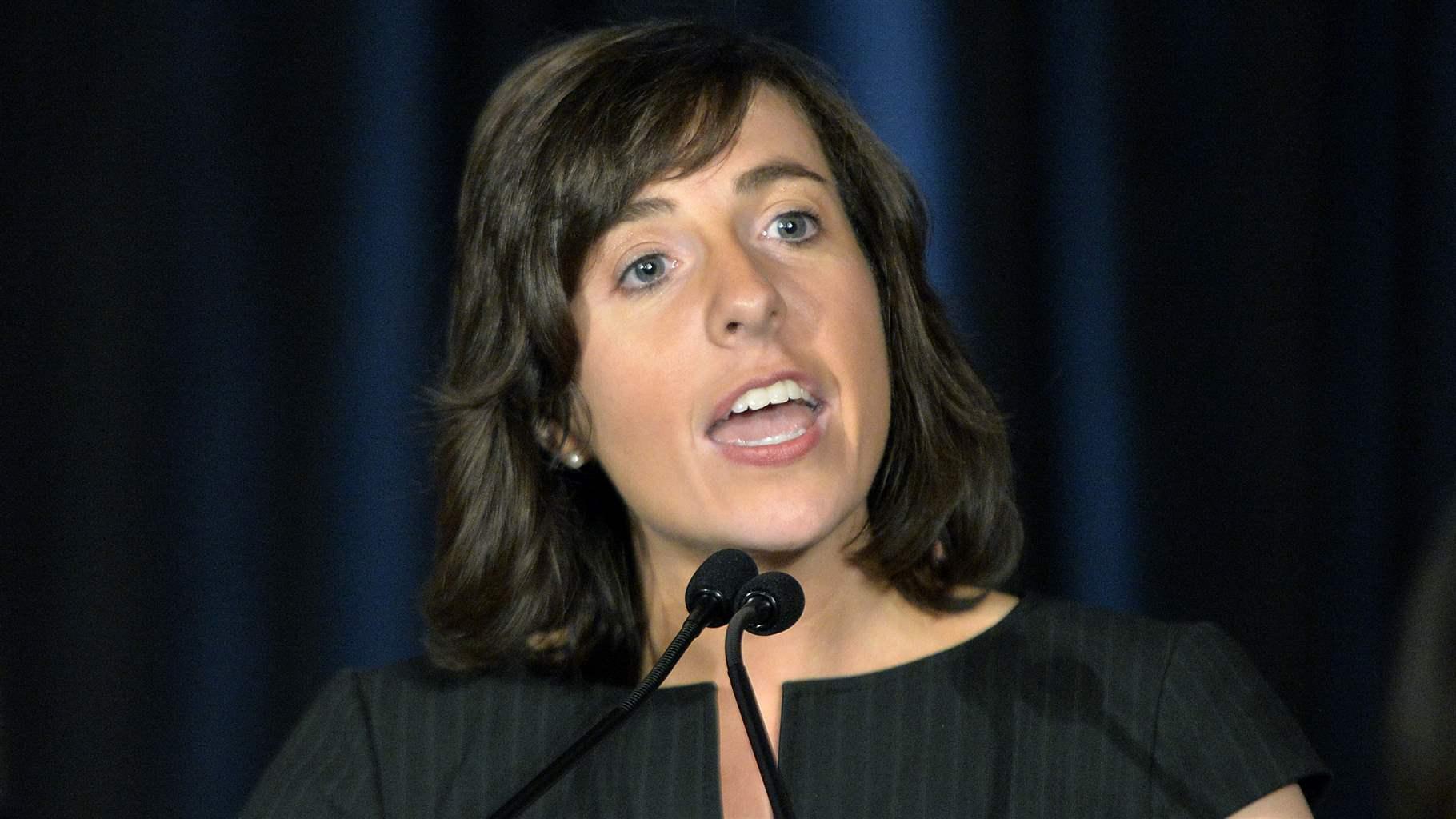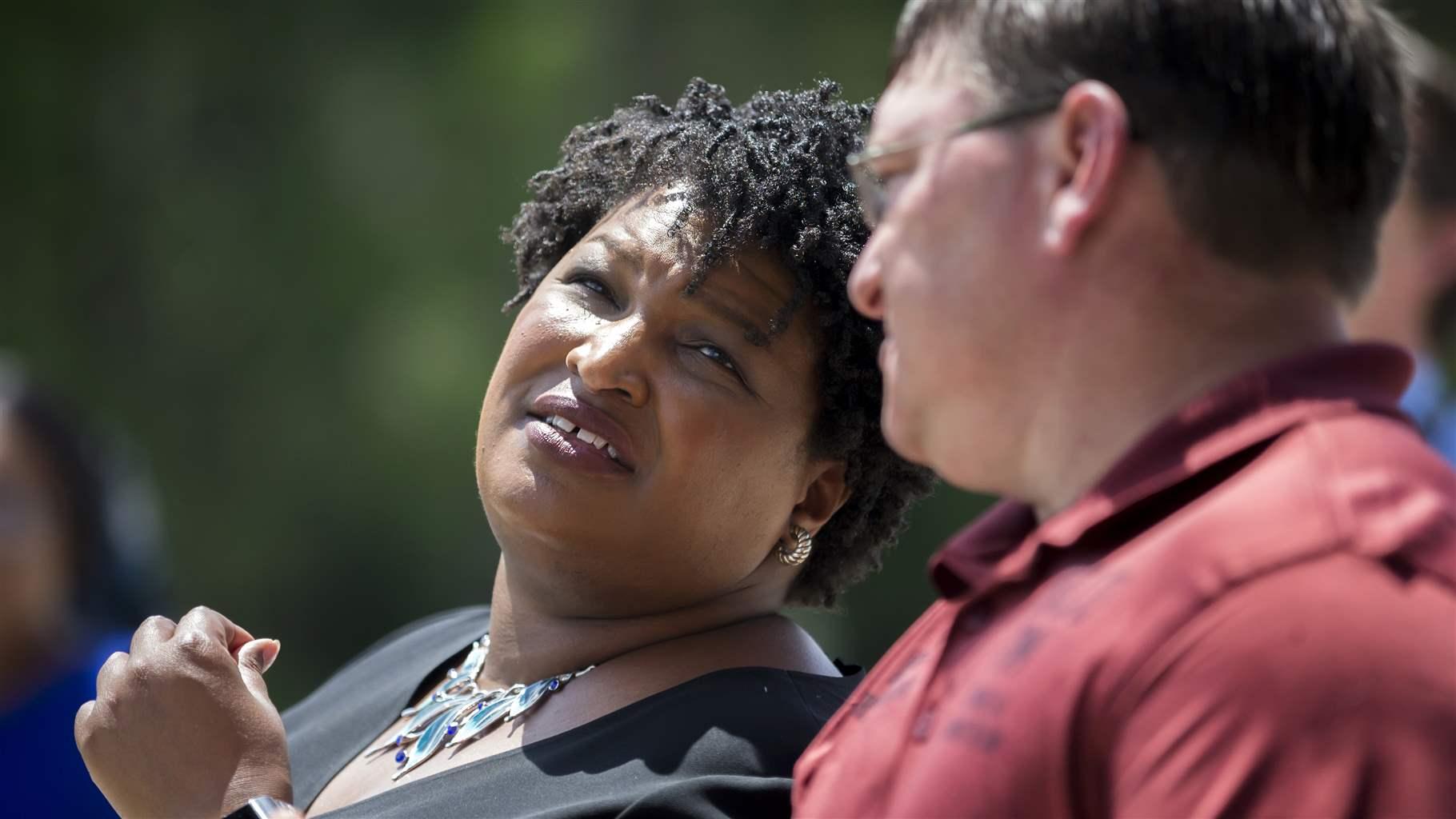It's Hard to Manage Your Credit When You've Never Heard of 'Interest'

When Kentucky state Treasurer Allison Ball and a colleague talked with high school seniors last year about credit cards and other pieces of the personal finance puzzle, something wasn’t right.
“We kept using the word ‘interest’ and we kept getting blank stares,” Ball recalled. Finally, she asked the students who knew what interest is. No one did.
“Here they were, about to be adults, two weeks before graduation — and they had no idea about interest on credit card payments,” said Ball, a former bankruptcy attorney. “That’s exactly how you get into trouble.”
Kentucky is the 44th most financially literate state, according to a WalletHub analysis based on 15 metrics, including the availability of high school financial literacy classes and the share of adults with rainy day funds. And the state has the eighth-highest personal bankruptcy rate, with 345 bankruptcy filings per 100,000 residents. But this year Kentucky launched a two-part initiative to help its residents better live within their means.
Beginning with ninth graders in 2020, Kentucky will require a financial literacy course before high school graduation. And assuming the courts allow its work-for-Medicaid plan to proceed, the state will offer financial literacy instruction to some Medicaid recipients who are required to work.
Kentucky’s focus on requiring financial education reflects a budding consensus among policymakers, academics, the finance industry and parents that states need to do more to ensure that students — and adults — learn how to manage credit, craft a budget, borrow for large purchases and save for retirement.
Three other states — Arizona, Iowa and Louisiana — also added financial literacy course requirements for high school graduation this year, according to the National Conference of State Legislatures.
New Mexico, which already requires a high school personal finance course be offered, will study how to provide financial literacy training to foster care children and help them manage checking and savings accounts. Kansas, which does not require a course, passed a law this year requiring financial assistance for individuals receiving compensation for wrongful convictions.
Until this year, only 17 states required a personal finance course for high school graduation, according to the Council for Economic Education’s 2018 Survey of the States.
Deeper in Debt
The uptick in activity this year comes as Americans sink deeper in debt. U.S. household debt reached $13.2 trillion in the first quarter of 2018, the 15th consecutive quarter increase. That’s higher than in the third quarter of 2008 during the financial crisis. Student loan debt reached a record $1.5 trillion in the first quarter of 2018.
As students have taken on more debt, more state and private universities have started to offer them financial literacy workshops and counseling.
But Stacey Abrams — a Democrat running for governor of Georgia, and the former minority leader of the Georgia House of Representatives — knows firsthand that a top-notch education and a high-paying job are no guarantee against personal debt.
Owing more than $200,000 in credit card debt, student loan debt and federal back taxes, Abrams has a repayment plan with the IRS.
“I am in debt, but I am not alone. Debt is a millstone that weighs down more than three-quarters of Americans,” she wrote in an op-ed in Fortune, arguing that her indebtedness should not keep her from becoming governor.
“I had racked up student loans, and throughout college and beyond, I’d swiftly turned every credit card application into those magical slivers of plastic that allowed me to pay for daily necessities,” she wrote.
Even when she finished Yale Law School in 1999 and landed a job paying $95,000 a year — three times more than her parents ever made combined, she said — Abrams remained mired in debt because family members needed her help. She used her credit cards again.
If elected, Abrams says she will start a Georgia FinLit Initiative with instruction for kids in elementary school.
For states, pressing forward on financial education means a raft of questions and answers that are likely to anger one group or another. Do we make financial literacy a condition of graduation? Will it be a stand-alone class or covered with other subjects? And, of course, how will we pay for it?
In Kentucky, policymakers tried and failed for at least six years before enacting the financial literacy measure into law.
“The answer to fixing this crisis long-term begins in childhood,” Ball, a Republican who has made financial literacy a priority, wrote in an op-ed endorsing the measure. “The best time to learn basic principles of saving and money management is before a person graduates from high school and enters the workforce.”
Kentucky’s work-for-Medicaid plan is currently on hold. On June 29, a federal judge stopped the rollout scheduled for July 1 and sent the plan back to the federal government, which granted the waiver that allowed Kentucky to add the requirements. The state hopes the plan will be reapproved by fall, said Adam Meier, secretary of Kentucky’s Cabinet for Health and Family Services.
If Kentucky proceeds, Medicaid recipients who fail to meet the work requirements will be offered a choice of online health or financial literacy classes. Members also will be able to take the classes to build credits toward dental or other benefits not included in their benefits package. They will learn such things as how to budget, open a bank account, balance a checkbook and deal with credit.
Nearly a third of Kentuckians receive Medicaid.
“Financial literacy is an issue across the board, but it’s particularly acute with low-income people, who are often unbanked and more vulnerable to payday lenders,” said Meier.
Does It Work?
Meanwhile, the Kentucky Department of Education is drawing up standards for the high school financial literacy requirement. School districts will have wide latitude in deciding how to satisfy the requirement, Ball said. No statewide test is likely, nor is there a budget for the new requirement. She said she plans to form a public-private foundation to cover costs.
There’s no shortage of educational materials by financial institutions and other organizations, and some are free. But there’s a complication.
“People cannot find results that financial literacy education works,” said Lauren Willis, a professor at Loyola Law School in Los Angeles and a prominent critic of financial literacy education.
While it’s possible to test someone’s knowledge of financial concepts like compound interest or inflation, there’s no way to know whether he or she remembers and acts on the concepts over a lifetime.
“It used to be, the way credit was managed, if the bank gave you a loan, you knew you were credit-worthy,” Willis said, because banks wouldn’t make risky loans. “Now you have to decide for yourself whether to take a loan and what kind.”
Willis works with the FoolProof Foundation, a nonprofit based in Florida that provides resources to help students and adults become more skeptical consumers.
Some studies have failed to show much effect of financial literacy education even in the short term. Annamaria Lusardi, academic director of the Global Financial Literacy Excellence Center at George Washington University, said that’s likely because the programs were poorly structured and funded.
“Too few states consider financial literacy essential or rigorous or a scientific topic,” she said. “We see states that don’t require the student to pass the course, or they don’t train the teachers, or it’s an unfunded mandate.”
Other countries do better. The United States ranked 14th in the world for financial literacy in Standard & Poor’s 2014 Global Financial Literacy Survey of more than 140 countries. Only 57 percent of American adults were found to be financially literate.
Ideally, every state would require a financial literacy class with an exam for high school graduation, said Laura Levine, president of the JumpStart Coalition for Personal Financial Literacy, a nonprofit based in Washington, D.C. That’s not likely anytime soon, so the coalition has a more modest aim.
The coalition, which has more than a hundred national organizations as members as well as affiliates in every state, launched Project Groundswell in April. The goal: to increase by a quarter the number of elementary, middle and high school students receiving “effective classroom-based financial education” by 2025. The coalition is working on specific goals and standards for effective programs.
Groundswell hopes to inspire more parents like Daniel Nestel in Montgomery County, Maryland, and grandparents to get involved.
Nestel, whose background is in financial education, was surprised when his 10th-grade daughter said she was learning about credit scores in her Advanced Placement government class.
“It seemed completely out of context,” said Nestel. “It’s too important to be taught at the end of the class at the end of the school year.”
Nestel started reaching out to local and state school officials and to financial literacy experts. He learned the Maryland Board of Education set financial literacy standards for grades 3 to 12 in 2011, but left implementing them up to each school district.
He wants a semester course on financial literacy with exams in high school.
“I’m trying to start the conversation,” he said. “Tell me what course is more important than personal finance? It touches every student.”


No comments:
Post a Comment